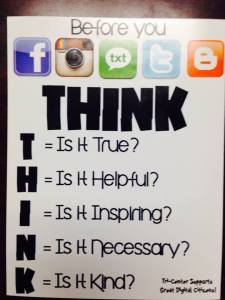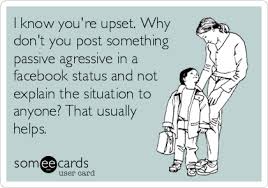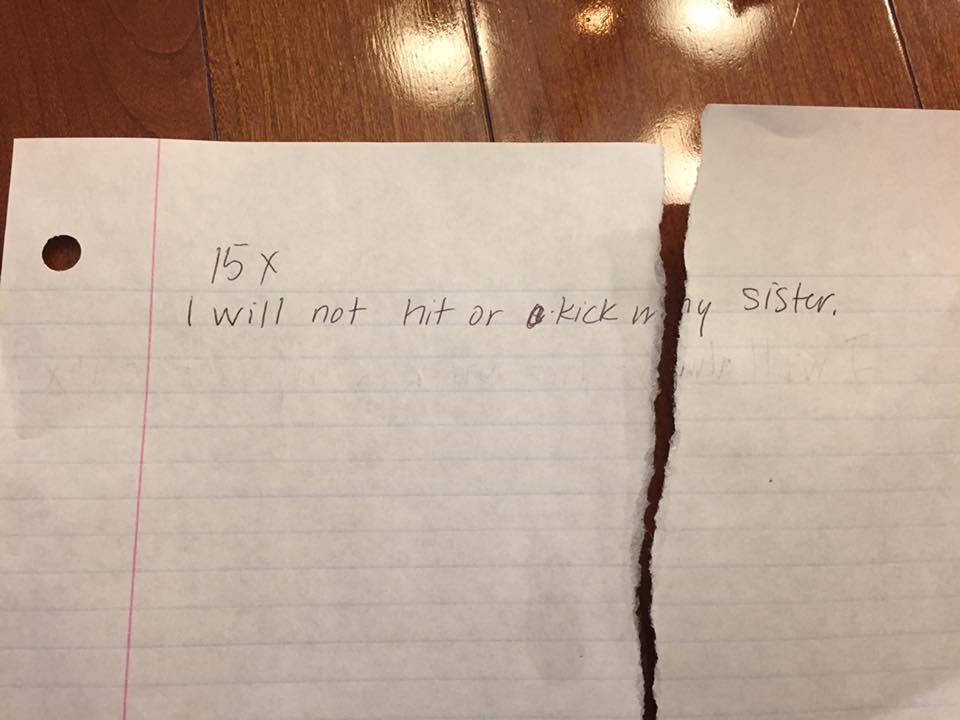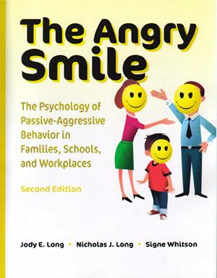Posts tagged passive aggressive
How Technology Paves the Way for Passive Aggressive Behavior
0Smartphones, email, and social media connect us in countless ways but can also be blamed for muddling human  connection like never before. Indeed, the same technology that makes real-time contact and around-the-clock communication possible has, in many cases, drastically lessened the amount of time that human beings spend actually interacting. For the passive-aggressive person, who prefers to mask their anger and avoid direct confrontation, this technology paves the perfect path for their hidden hostility.
connection like never before. Indeed, the same technology that makes real-time contact and around-the-clock communication possible has, in many cases, drastically lessened the amount of time that human beings spend actually interacting. For the passive-aggressive person, who prefers to mask their anger and avoid direct confrontation, this technology paves the perfect path for their hidden hostility.
This article, previously posted on Psychology Today, explains four reasons why passive-aggressive behavior thrives online.
Stopping Passive Aggressive Behavior Online
0Taking public jabs at others while avoiding personal confrontation is a hallmark of passive aggressive behavior. For many, it is also becoming a new social norm as more and more of our interpersonal communication takes place online instead of face to face. Passive aggression is a deliberate but masked way of expressing feelings of anger (Long & Whitson, 2016). Through such actions as posting embarrassing photos on social media and purposeful inactions such as failing to stop the spread of online gossip, digital communication has become the perfect medium for sugarcoated hostility.
Please click here to read my full post on Psychology Today about a real-life incident of unchecked, online passive aggressive behavior that humiliated a student in a suburban middle school…and how one astute teacher effectively managed the situation.

How to Respond to Passive Aggressive Emails
0Learn to Understand and Change Passive Aggressive Behavior
0It’s cold outside! ![]() 🧥
🧥![]() 🧤
🧤![]() 🧣
🧣![]() ☃️
☃️![]() ❄️ What a perfect day to stay indoors and learn new skills to understand and change passive aggressive behavior. Check out the LSCI Institute’s online training, The Angry Smile.
❄️ What a perfect day to stay indoors and learn new skills to understand and change passive aggressive behavior. Check out the LSCI Institute’s online training, The Angry Smile.
Complete a whole day’s worth of live training in just a few hours, right here:
(Copy of The Angry Smile book is included and will be shipped directly to the address you provide!)
6 Tips for Confronting Passive Aggressive Behavior
0Do you know someone who is overtly cooperative but covertly defiant? Do you live or work with a person who chronically procrastinates, carries out tasks with intentional inefficiency, or acts as if he or she is the victim of your impossibly high standards? If you know this feeling of being on an emotional roller coaster, chances are good that you are dealing with a passive-aggressive person.
Passive aggression is a deliberate and masked way of expressing covert feelings of anger (Long, Long & Whitson, 2016). It involves a variety of behaviors designed to get back at another person without the other recognizing the underlying anger. In the long run, passive-aggressive behavior can be even more destructive to relationships than aggression. Over time, relationships with a person who is passive-aggressive will become confusing, discouraging, and dysfunctional.
Below, I share a real-life passive-aggressive encounter between a husband and wife, and explain how they could confront and change this destructive pattern of interaction using the process of “benign confrontation.”
For many, confrontation is a scary prospect: Whether out of fear of receiving a person’s anger or out of discomfort with exposing someone’s emotions, some people spend a lifetime hiding from face-to-face, direct communication about others’ behavior. Passive-aggressive individuals know this. They bank on it. In fact, they often select their adversaries based on who will be least likely to attempt to unmask the anger that they so desperately want to keep hidden.
The bad news for those who shy away from confrontation is that without directly addressing passive-aggressive behavior, the pattern will play out against them again and again. The good news is that benign confrontation is nothing to be afraid of. It is not an in-your-face, anger-inspiring, make-them-admit-what-they-did kind of authoritarian tactic. Rather, it is a quiet and reflective verbal intervention skill in which an adult gently but openly shares his or her thoughts about a person’s behavior and unexpressed anger. It is based on the decision not to silently accept a person’s manipulative and controlling behavior any longer.
See how the six-step process of benign confrontation plays out in this husband-wife dynamic:
Richard liked to relax at night when he got home from work. He loved his family, but when it came to the evening hours, he wanted time to himself. And for the month of January, he had had it this way. In helping their 2-year-old daughter, Hayley, adjust to a “big-girl bed,” his wife, Kelly, had taken full responsibility for the bedtime routine. By February, Hayley was able to settle down within 15 minutes and stay in her bed to fall asleep. One night, Kelly asked Richard if he could put Hayley to bed. Richard agreed with the request and went upstairs with Hayley.
From downstairs, Kelly could hear squeals of laughter. She thought to herself, “How nice that they are getting some playtime together.” After 20 minutes passed by, she heard the loud slam of a closet door, and wondered if Hayley needed a new diaper or change of pajamas. When 30 minutes had gone by and loud music started to play from Hayley’s room, Kelly could feel her anger rising. Forty-five minutes after she asked Richard and Hayley to go upstairs for bedtime, Kelly went up to the room and opened the door. Hayley was out of her fleece pajamas and in a bathing suit, sun hat, Barbie sunglasses, and a pair of brand new, too-big, hot pink water shoes.
article continues after advertisement
Hayley ran to her mother with a huge, wide-awake smile: “Bedtime so fun!”
Kelly glared at Richard and exited the room quickly. When he returned downstairs another 35 minutes later and faced Kelly’s angry barrage of questions about what he was thinking and why he would defy the soothing bedtime routine she had worked so hard to create, Richard feigned innocence: “What? We were just having some fun!”
The situation was clear; Richard didn’t want to bother with bedtime routines. Rather than tell Kelly this, and risk an argument over sharing childcare responsibilities, he chose a passive-aggressive response to the situation. The cunning of his personal choice was unmistakable: If Kelly had argued with his stated intention of having fun with his daughter, she would surely have appeared an uptight, no-fun mother—and an overly controlling wife. Richard’s strategy netted a significant short-term win for both his daughter and him: Hayley thoroughly enjoyed bedtime that night and thought her Daddy was the coolest in the world—and Richard would not be called upon to help with this evening responsibility for months to come. Winning a battle, however, sometimes results in losing the war. The long-term impact of chronic passive-aggressive behavior on Richard’s marriage was already beginning to take its toll.
Not wanting to continue harboring feelings of chronic irritation toward her husband, but also unwilling to carry all of the childcare responsibilities on her own, Kelly can use benign confrontation to communicate with Richard about the incident.
1. Know it when you see it.
Once Kelly is aware of typical patterns of passive-aggressive behavior, she can recognize that her husband is expressing unspoken reluctance to give up his evening free time through the intentional undoing of an established bedtime routine. Rather than responding with anger or having a bedtime tantrum worthy of their two-year old, recognizing Richard’s behavior for what it is will help Kelly keep her cool.
2. Decline the Invitation to argue.
While Kelly waits downstairs for Richard to put Hayley to bed, she should manage her rising anger through self-talk strategies: “Richard didn’t want to put Hayley to bed tonight. Rather than telling me in words, he is showing me through this passive-aggressive behavior. I will not allow myself to get caught up in a no-win argument.”
Read the rest of the article on PsychologyToday, or use the link below:
Passive Aggressive Notes from Kids
0I have a love/hate relationship with all of the useless bits of information from my friends’ lives that I can find on Facebook. While I don’t always care so much about the heat intensity of an old college friend’s coffee, the naughtiness of a a neighbor’s pet, or the endless series of alternative facts from our political climate, I do keep trolling on for the occasional gems of daily life…such as this one.
Recently, a friend posted these photos of her attempt at punishing her son for his aggressive behavior toward his sister…and his passive aggressive response to them both (photos posted with permission):
https://www.psychologytoday.com/blog/passive-aggressive-diaries/201703/passive-aggressive-notes
Mom gives 8-year old son a simple writing assignment as a consequence for his aggressive behavior. He is to write “I will not hit or kick my sister” 15 times on a piece of paper:
8-year old son counters in this most passive-aggressive way: “I will always hit and kick my sister 15 times.”
This is a must for inclusion in my next Angry Smile training!
Passive Aggressive Behavior in the Workplace
0I saw this image today on a friend’s Facebook page and had to post it as a classic example of passive aggressive behavior in the workplace! For more information on recognizing and responding effectively to passive aggression visit the LSCI Institute online at www.lsci.org and check out our book, The Angry Smile, as well as our online and live training opportunities!
How Passive Aggressive Are You?
0Currently, I am working on updating The Angry Smile text, for what will become the book’s 3rd edition. It’s interesting to think back on how much of my current work and writing on the topics of helping kids manage anger and teaching them to cope with bullying are tied directly to this work with understanding and changing #passiveaggressive behavior. Here’s a light-hearted “test” of how often you use Passive Aggressive Behavior in your daily life:
The Angry Smile at CPI’s Trainer Conference in New Orleans
0This week, I had the honor and pleasure of traveling to one of my favorite cities–New Orleans, LA– to present at the CPI Conference on The Angry Smile and strategies for understanding and changing passive aggressive behavior. This article summarizes some of what I shared with this great group of professionals.
Also, check out the LSCI Institute’s online training based on The Angry Smile, which we proudly partner with CPI to present to professionals and parents everywhere. www.lsci.org
5 Tips for Communicating Assertively without being Passive Aggressive
0Looking for ways to improve your communication at home or at work? This article, written for Psych Central and featuring some of our work from The Angry Smile, offers five strategies for replacing passive aggression with assertiveness:








